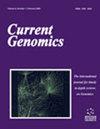Pan-Cancer Analysis Identifies AIMP2 as a Potential Biomarker for Breast Cancer
IF 1.4
4区 生物学
Q4 BIOCHEMISTRY & MOLECULAR BIOLOGY
引用次数: 0
Abstract
Introduction:: Aminoacyl tRNA synthetase complex interacting with multifunctional protein 2 (AIMP2) is a significant regulator of cell proliferation and apoptosis. Despite its abnormal expression in various tumor types, the specific functions and effects of AIMP2 on tumor immune cell infiltration, proliferation, and migration remain unclear. background: AIMP2, Aminoacyl TRNA Synthetase Complex Interacting Multifunctional Protein 2, also known as JTV1, a multifunctional protein that forms a macromolecular complex with human aminoacyl tRNA synthetase, which consists of three non-enzymatic proteins, including p43, p38 and p18 proteins, of which p38 protein is AIMP2[1]. AIMP2 is necessary for the assembly and stability of aminoacyl tRNA synthetase complex[2]. Besides being important for efficient protein synthesis, additional physiological roles for AIMP2 have been discovered[3, 4]. For example, following DNA damage, AIMP2 is liberated from the ARS complex, phosphorylated in a JNK2-dependent pathway and translocated into the nucleus where it has been suggested to bind and sequester p53 from Mdm2-dependent ubiquitination[5]. AIMP2 has also been shown to be a substrate of E3 ligase Parkin[6]. Accumulation of AIMP2 as a result of Parkin mutation has been speculated to contribute to the characteristic dopaminergic cell death observed in Parkinson patients[7]. In addition, AIMP2 augments tumor necrosis factor-α-induced apoptotic signaling and exerts antiproliferative activities in TGF-β and Wnt pathways via distinct working mechanisms [8-10]. Therefore, we wonder that AIMP2 may play a crucial role in the occurrence and development of cancer. However, there are relatively few reseaches on AIMP2 in oncology. Current studies confirmed that AIMP2 may function as a multifunctional tumor suppressor[9, 11]. In this study, we analyzed the expression of AIMP2 and its relationship with the prognosis, Tumor Mutation Burden (TMB) and Microsatellite Instability (MSI) in 33 cancer types. In addition, we examined the correlation between AIMP2 and the immune microenvironment, immune-related antigens, and immune checkpoint genes. The results showed that AIMP2 was higher expressed in tumor tissue compared with normal tissue. Moreover, AIMP2 was associated with several tumor stages. Survival analysis showed that AIMP2 expression was strongly associated with OS in some cancer patients, where the high expression of AIMP2 was associated with a worse prognosis in five types of cancer. Then, we confirmed that the expression level of AIMP2 was associated with tumor immune infiltration and tumor microenvironment, especially in BRCA. Finally, si-RNA mediated knockdown of AIMP2 suppressed the proliferation and migration of BC cells in vitro. In conclusion, AIMP2 was found to be differentially expressed in the pan-cancer analysis and might play an important role in tumor immunity, which is expected to be a potential tumor prognostic marker, especially in BRCA. Method:: To assess AIMP2's role in tumor immunity, we conducted a pan-cancer multi-database analysis using the Cancer Genome Atlas (TCGA), Genotype-Tissue Expression (GTEx), and Cancer Cell Lines Encyclopedia (CCLE) datasets, examining expression levels, prognosis, tumor progression, and immune microenvironment. Additionally, we investigated AIMP2's impact on breast cancer (BRCA) proliferation and migration using cell counting kit 8 (CCK-8) assay, transwell assays, and western blot analysis. objective: In order to evaluate the role of AIMP2 in tumor immunity in a pan-cancer multi-database. Result:: Our findings revealed that AIMP2 was overexpressed in 24 tumor tissue types compared to normal tissue and was associated with four tumor stages. Survival analysis indicated that AIMP2 expression was strongly correlated with overall survival (OS) in certain cancer patients, with high AIMP2 expression linked to poorer prognosis in five cancer types. Conclusion:: Finally, siRNA-mediated AIMP2 knockdown inhibited BRCA cell proliferation and migration in vitro. In conclusion, our pan-cancer analysis suggests that AIMP2 may play a crucial role in tumor immunity and could serve as a potential prognostic marker, particularly in BRCA. conclusion: AIMP2 was found to be differentially expressed in the pan-cancer analysis and might play an important role in tumor immunity, which is expected to be a potential tumor prognostic marker, especially in BRCA. other: -泛癌症分析确定AIMP2为乳腺癌的潜在生物标志物
氨基酰基tRNA合成酶复合体与多功能蛋白2 (AIMP2)相互作用,是细胞增殖和凋亡的重要调节因子。尽管AIMP2在多种肿瘤类型中表达异常,但其对肿瘤免疫细胞浸润、增殖和迁移的具体功能和作用尚不清楚。背景:AIMP2, Aminoacyl TRNA Synthetase Complex Interacting Multifunctional Protein 2,又称JTV1,是一种与人氨酰基TRNA合成酶形成大分子复合物的多功能蛋白,由p43、p38和p18三种非酶蛋白组成,其中p38蛋白为AIMP2[1]。AIMP2是氨基酸基tRNA合成酶复合物的组装和稳定所必需的[2]。除了对高效蛋白质合成很重要外,还发现了AIMP2的其他生理作用[3,4]。例如,在DNA损伤后,AIMP2从ARS复合体中解放出来,在依赖jnk2的途径中磷酸化,并易位到细胞核中,在那里它被认为与依赖mdm2的泛素化p53结合并隔离[5]。AIMP2也被证明是E3连接酶Parkin的底物[6]。据推测,帕金突变导致AIMP2的积累可能导致帕金森患者出现特征性的多巴胺能细胞死亡[7]。此外,AIMP2增强肿瘤坏死因子-α-诱导的凋亡信号,并通过不同的工作机制在TGF-β和Wnt通路中发挥抗增殖活性[8-10]。因此,我们猜想AIMP2可能在癌症的发生发展中起着至关重要的作用。然而,关于AIMP2在肿瘤学中的研究相对较少。目前的研究证实AIMP2可能是一种多功能的肿瘤抑制因子[9,11]。在本研究中,我们分析了AIMP2在33种肿瘤类型中的表达及其与预后、肿瘤突变负荷(Tumor Mutation Burden, TMB)和微卫星不稳定性(Microsatellite Instability, MSI)的关系。此外,我们还研究了AIMP2与免疫微环境、免疫相关抗原和免疫检查点基因之间的相关性。结果表明,AIMP2在肿瘤组织中的表达高于正常组织。此外,AIMP2与多个肿瘤分期相关。生存分析显示,AIMP2的表达与部分癌症患者的OS密切相关,其中AIMP2的高表达与5种癌症的预后较差相关。然后,我们证实了AIMP2的表达水平与肿瘤免疫浸润和肿瘤微环境有关,尤其是在BRCA中。最后,si-RNA介导的AIMP2的下调抑制了体外BC细胞的增殖和迁移。综上所述,在泛癌分析中发现AIMP2存在差异表达,可能在肿瘤免疫中发挥重要作用,有望成为潜在的肿瘤预后标志物,尤其是在BRCA中。方法:为了评估AIMP2在肿瘤免疫中的作用,我们使用癌症基因组图谱(TCGA)、基因型-组织表达(GTEx)和癌症细胞系百科全书(CCLE)数据集进行了泛癌症多数据库分析,检查表达水平、预后、肿瘤进展和免疫微环境。此外,我们使用细胞计数试剂盒8 (CCK-8)试验、transwell试验和western blot分析研究了AIMP2对乳腺癌(BRCA)增殖和迁移的影响。目的:在泛肿瘤数据库中评价AIMP2在肿瘤免疫中的作用。结果:与正常组织相比,AIMP2在24种肿瘤组织中过表达,并与4种肿瘤分期相关。生存分析表明,AIMP2表达与某些癌症患者的总生存期(OS)密切相关,在5种癌症类型中,AIMP2高表达与预后较差相关。结论:sirna介导的AIMP2敲低最终抑制了BRCA细胞的体外增殖和迁移。总之,我们的泛癌症分析表明,AIMP2可能在肿瘤免疫中发挥关键作用,并可能作为潜在的预后标志物,特别是在BRCA中。结论:在泛癌分析中发现AIMP2存在差异表达,可能在肿瘤免疫中发挥重要作用,有望成为潜在的肿瘤预后标志物,尤其是在BRCA中。其他:-
本文章由计算机程序翻译,如有差异,请以英文原文为准。
求助全文
约1分钟内获得全文
求助全文
来源期刊

Current Genomics
生物-生化与分子生物学
CiteScore
5.20
自引率
0.00%
发文量
29
审稿时长
>0 weeks
期刊介绍:
Current Genomics is a peer-reviewed journal that provides essential reading about the latest and most important developments in genome science and related fields of research. Systems biology, systems modeling, machine learning, network inference, bioinformatics, computational biology, epigenetics, single cell genomics, extracellular vesicles, quantitative biology, and synthetic biology for the study of evolution, development, maintenance, aging and that of human health, human diseases, clinical genomics and precision medicine are topics of particular interest. The journal covers plant genomics. The journal will not consider articles dealing with breeding and livestock.
Current Genomics publishes three types of articles including:
i) Research papers from internationally-recognized experts reporting on new and original data generated at the genome scale level. Position papers dealing with new or challenging methodological approaches, whether experimental or mathematical, are greatly welcome in this section.
ii) Authoritative and comprehensive full-length or mini reviews from widely recognized experts, covering the latest developments in genome science and related fields of research such as systems biology, statistics and machine learning, quantitative biology, and precision medicine. Proposals for mini-hot topics (2-3 review papers) and full hot topics (6-8 review papers) guest edited by internationally-recognized experts are welcome in this section. Hot topic proposals should not contain original data and they should contain articles originating from at least 2 different countries.
iii) Opinion papers from internationally recognized experts addressing contemporary questions and issues in the field of genome science and systems biology and basic and clinical research practices.
 求助内容:
求助内容: 应助结果提醒方式:
应助结果提醒方式:


